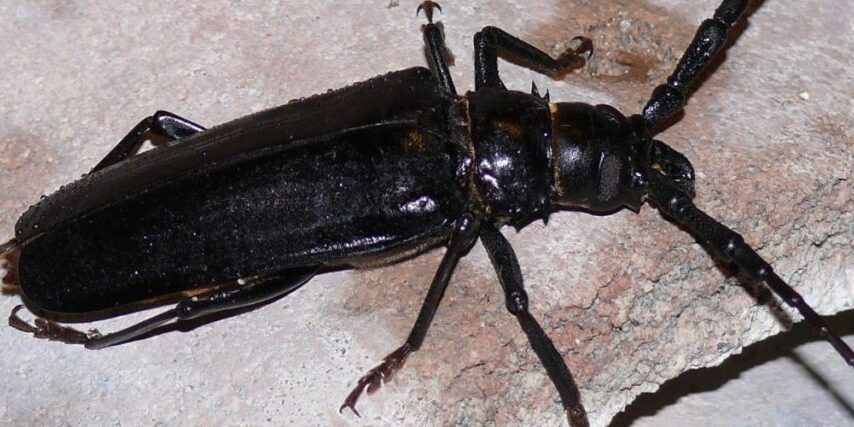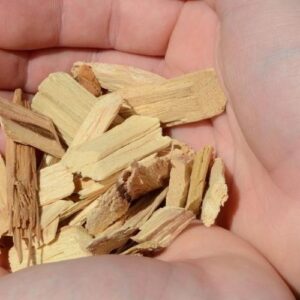
The Texas mountain laurel is a beautiful, evergreen shrub or small tree, with fragrant purple flowers and one noticeable problem – each summer, the plant may suddenly start losing its new leaves and buds. It looks like something is eating the plant, but it’s not always obvious what’s causing it.
In this article, we explain what’s happening, what it does to your Texas Mountain Laurel, whether you should be worried about it, and more.
Something seems to be eating my Texas mountain laurel. What is it?
It’s most likely genista caterpillars (Uresiphita reversalis), which hatch into the broom moth They are known to eat the leaves of both broom plants (genista means “broom”) and Texas mountain laurels.
Could it be something else?
Texas mountain laurel leaves are toxic to most other kinds of pests, but they don’t affect genista caterpillars. In fact, any predators, such as birds, that eat other kinds of caterpillars stay away from genista caterpillars, as they would suffer from this toxicity. As a result, these caterpillars have fewer natural predators than other types (but they still have some, such as lizards and wasps).
What do genista caterpillars eat?
Genista caterpillars prefer new leaves, buds, and shoots on Texas mountain laurel. They are also known to live on broom plants, which is how they got their name.
Can these caterpillars kill my tree?
It’s unlikely. Usually, genista caterpillars cause only cosmetic damage from the loss of leaves. However, there are cases where extreme loss of leaves can slow the growth of the plant. Texas mountain laurels can survive losing up to 40% of their leaves. Any more than 40% loss can cause the tree to suffer and may slow the growth and impact its health.
What time of year should I look for them?
Summer is when these caterpillars are most active. In fact, you may find them in various life stages during the summer, as multiple generations can be born during the course of a few months during the warmer weather.
Can I prevent them from eating my Texas mountain laurel?
If you remove egg masses before they hatch, you’ll bring down the number of adult caterpillars and lessen the amount of damage done to your plant. Look for egg masses during the spring, and again in late summer. They’re not easy to find, but look for small areas of eggs that overlap, usually on the underside of new foliage, towards the tips of branches. If you spot an egg mass, you can remove it by hand or spray it with water at high pressure.
What does the genista caterpillar look like?
Compared to other types of caterpillars, the genista caterpillar has bright colors. This may be to warn birds and mammals that the caterpillar is poisonous to them.
You will recognize them by their yellow/green color with black and white spots and white hairs. Their heads are black and have white spots. They are only about a half an inch long, so they might be tough to spot at first.
What else should I look for?
Genista caterpillars create silk webbing or loosely spun cocoons, usually on the older leaves of plants.
How do you control genista caterpillars?
Small groups of genista caterpillars can be removed with a high-pressure water spray or insecticidal sprays.
Pruning infested branches can stop the spread of this pest and removing eggs before the caterpillars hatch will also help. When pruning, keep in mind that Texas mountain laurels are slow-growing trees and that blooms will only appear on wood that is over a year old. If you prune off caterpillar-infested branches, you may lose some of the shape or blooms for a while. Never prune more than a third of the shrub/tree at a time.
If the feeding caterpillars are destroying your shrub or tree, Titan Tree Care can apply a special spray containing Bacillus thuringiensis (Bt) to stop them.
Contact us at Titan Tree Care if you are concerned about the health of your Texas mountain laurel!
See Our Latest Articles
More Articles Like This

Titan Tree Care is a full-service tree care company located in Anthem, AZ and serving all of North Phoenix. We offer a wide range of services to meet your tree care needs, including tree and palm trimming, tree pruning, tree removal, stump grinding, and more. We also offer insect or disease treatments and fertilization services. We are dedicated to providing high-quality, safe, and effective tree care services to our customers and work hard to ensure that your trees are healthy and look their best.









